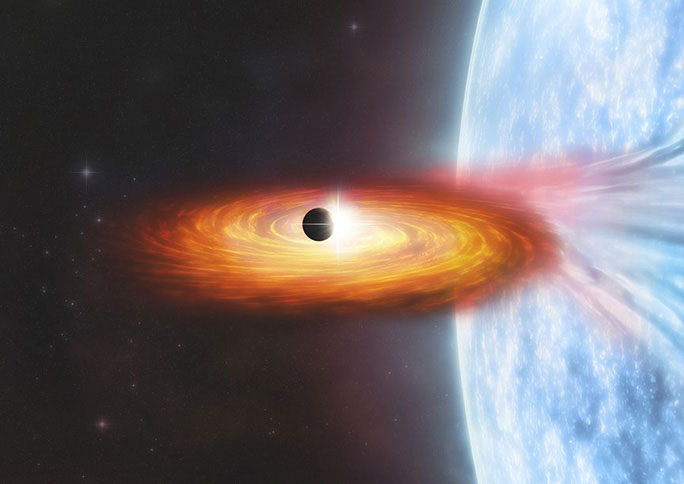A Strange Planet Located 28 Million Light-Years Away, in the Spiral Galaxy M51.
According to Live Science, the newly discovered planet – named M51-ULS-1b – is only considered a “potential exoplanet” because the signs of its existence are still indirect, like most exoplanets previously observed. However, it might just be the tip of the iceberg: there is a high probability that many other similar exoplanets orbit around the area of M51-ULS-1b.

Graphic depicting the world of a neutron star and a black hole, which may contain an interesting planet orbiting around it – (Image: NASA/CXC/M. Weiss)
The research team, led by astrophysicist Rosanne Di Stefano from the Harvard-Smithsonian Center for Astrophysics (USA), states that this strange world does not orbit a star like our Sun.
What scientists found from the complex dataset of NASA’s Chandra X-ray Observatory is a neutron star orbiting a black hole or a massive companion star, with the mysterious exoplanet orbiting this deadly duo, a phenomenon never seen in planets within the same galaxy.
A neutron star is the remnant of a star’s “death” that has occurred twice, possessing a magnetic field that can be a billion times stronger than Earth’s, despite being much smaller. It is also considered a type of “cosmic monster,” similar to a black hole.
Finding an exoplanet outside the Milky Way galaxy (the galaxy containing Earth) is a remarkable discovery, as even planets within the same galaxy but from distant star systems are already difficult to observe. However, this research team has discovered that X-ray observations can lead to better findings in more remote areas of space. This could open a new chapter in the search for worlds beyond Earth.
In this study, scientists “captured” a brief interruption in X-rays while observing the “monster” pair – the neutron star and black hole – revealing that something is obstructing the view, with a giant planet being the most reasonable answer.
The research was recently published in the scientific journal Nature Astronomy.


















































